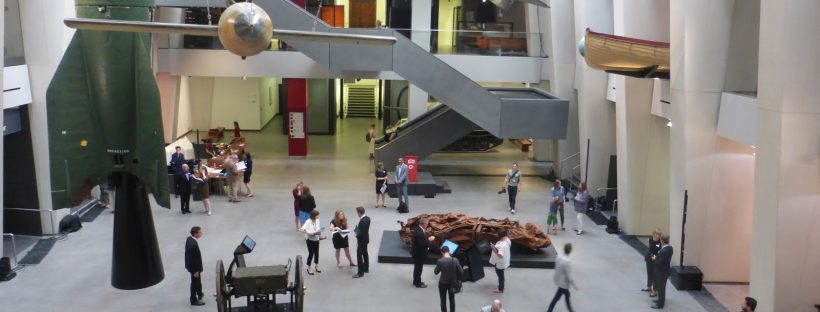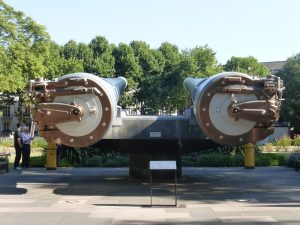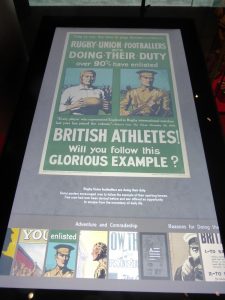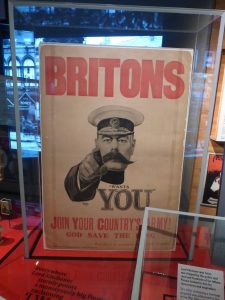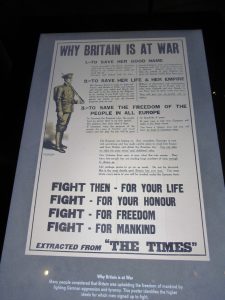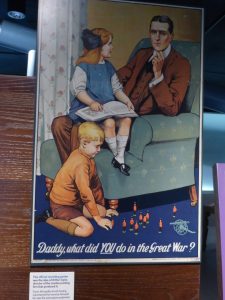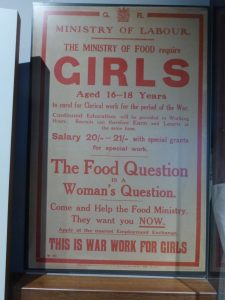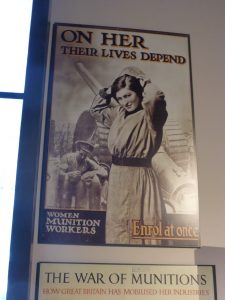The Imperial War Museum has been getting ready for the centenary of the First World War (1WW) and has been closed all year but this great museum reopened on Saturday with its new 1WW Galleries at the heart of its £40 million pounds revamp.
On arrival, the same impressive building greets you with its rather menacing guns pointing straight at you. These massive guns fought battles in both world wars mounted on battleships and challenge the imagination to visualise how big the ships must have been.
The new atrium grabs your attention as soon as you enter: it’s huge and full of dramatic symbols of war. They have dug down an extra floor to give this area even more height and more wow factor. The atrium houses a collection of items, symbols of war both old and new. It’s good to see as you go round the museum that, although the focus is on 1stWW, there is plenty of attention given to more recent and ongoing conflicts. In the atrium, you can explore the 9 iconic items chosen to introduce themes of war from the 1stWW to the present day. These include a huge V2 rocket, a T-34 Russian tank, a damaged press Land Rover from Gaza and the remains of a car from a Baghdad market. Look up and there is a Spitfire and a Harrier jump jet both easily contained within the vast atrium space. Each item has a film or generous information to supplement those already with knowledge or to easily inform those coming to this subject afresh.
My eye was caught by the V2 which stands at 14.3m high. I realised from watching the film how little I knew about these rockets which along with the V1s killed over 8000 Londoners and destroyed over 30,000 homes, flying their deadly path from launch sites mostly in Holland and Belgium.
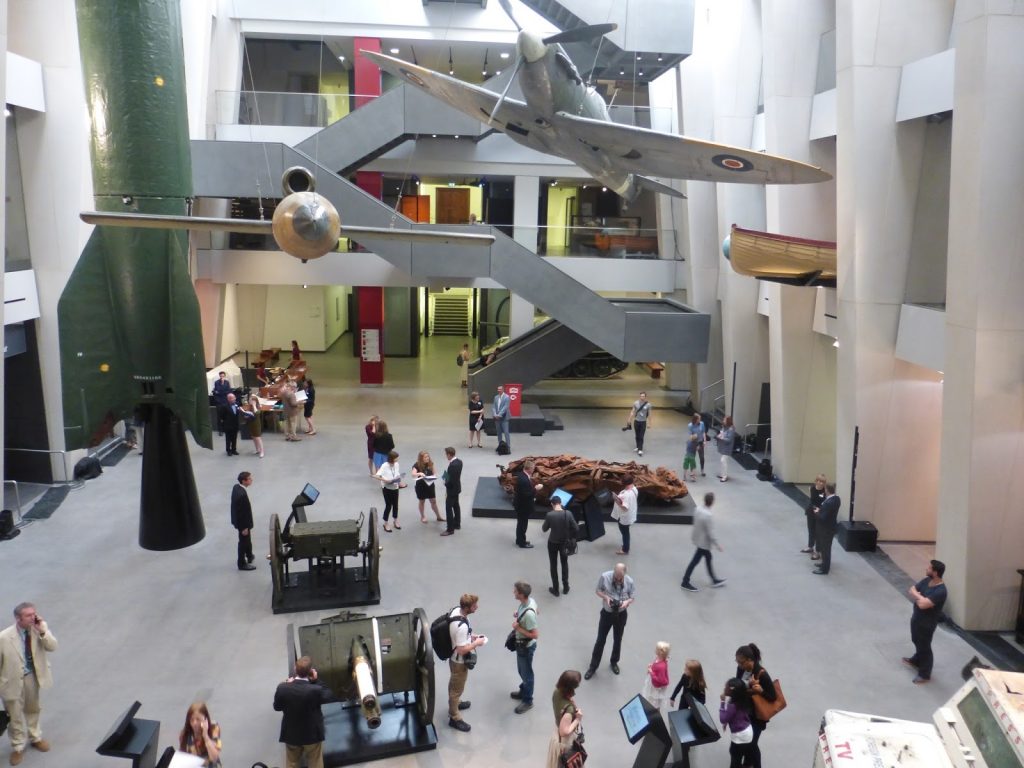
The vast Fosters + Partners atrium
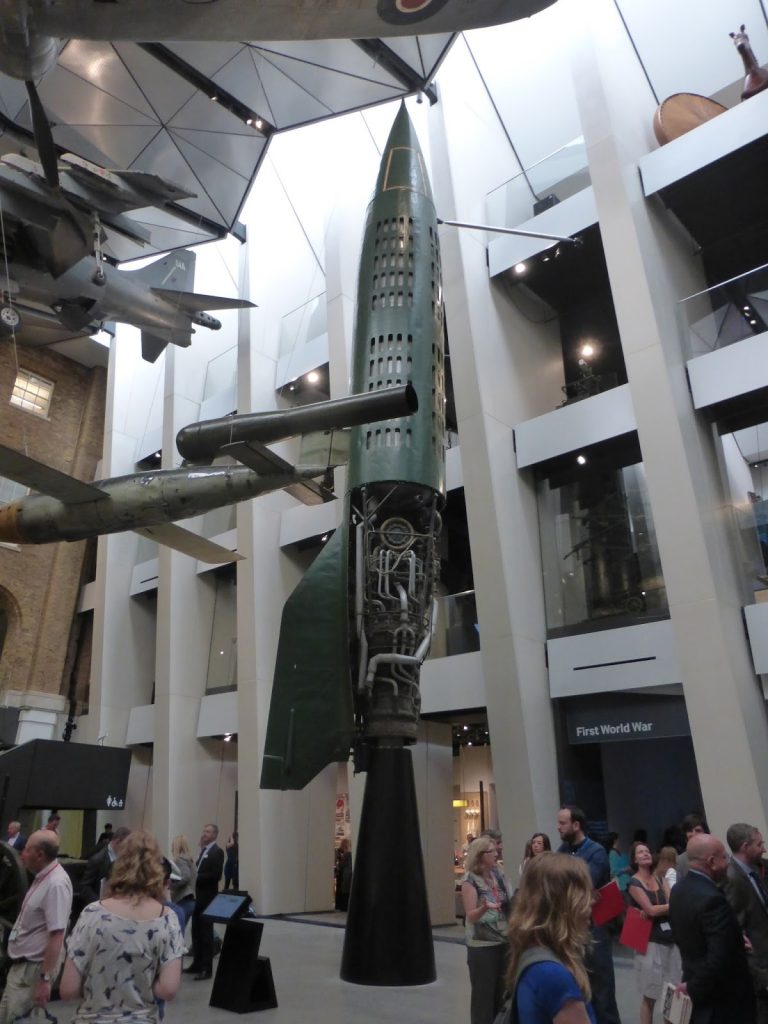
A V2 rocket towers above visitors
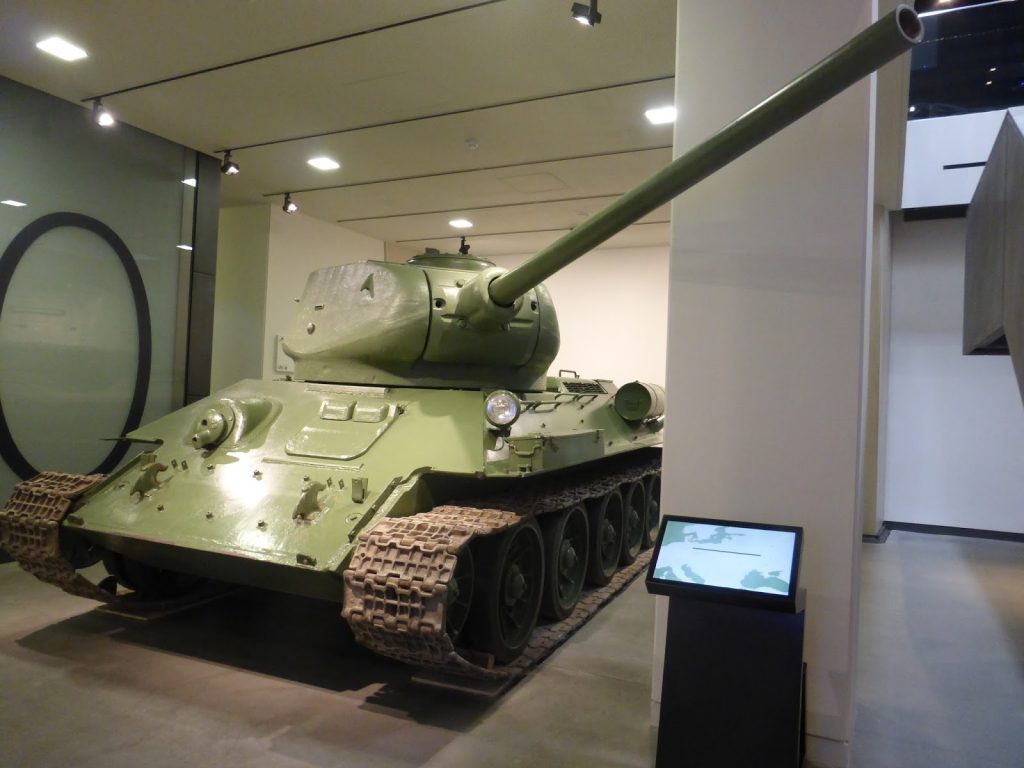
The menacing sight of the Russian tank

Battered press vehicle
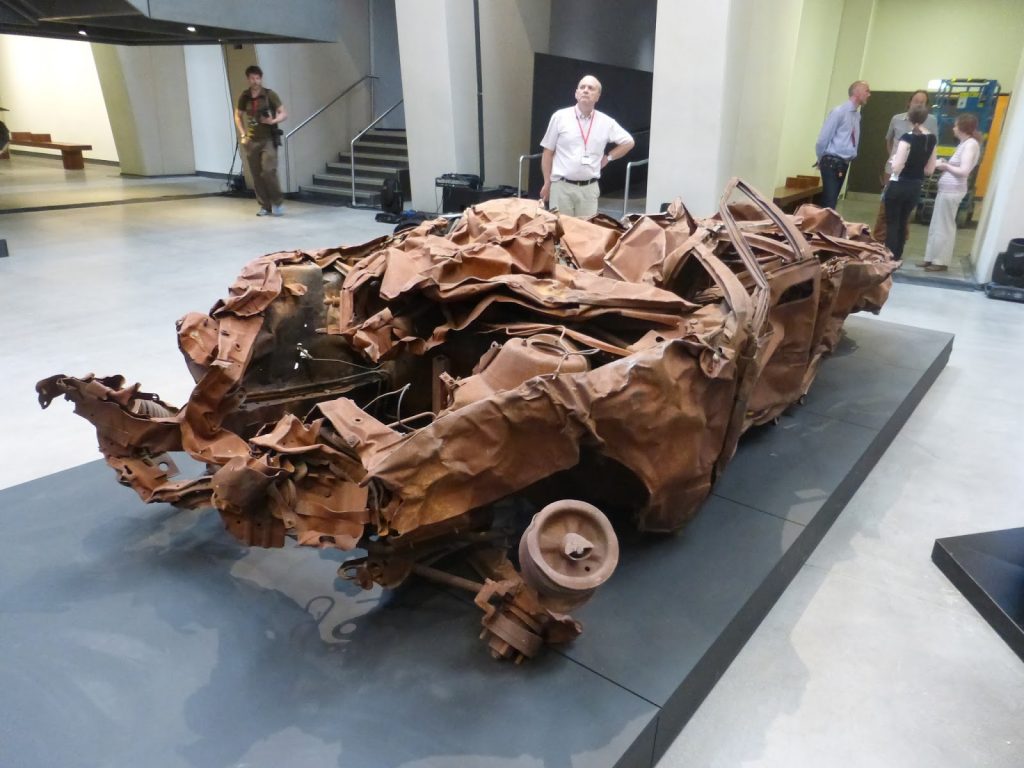
What’s left when a car is caught in a bomb blast in Iraq
This wreck of a car, caught in a suicide bomb, was taken around the USA by the British artist Jeremy Deller as an art piece called ‘It is What it is’. He crossed America with a US soldier and an Iraqi citizen to confront people with the reality of war.
I was drawn into the new 1WW galleries to see the result of all the Curator and his team’s hard work. As you will have gathered already, the subject matter is bound to be hard to take in and the new galleries can be a bit overwhelming as they carefully and accurately portray the horror of this war that saw millions lose their lives and millions more have their lives damaged forever. The galleries take you through the war on a chronological path and aim to tell the story of the 1WW through the lives of those who experienced it and they are mindful that, although this generation is no longer with us, their words live on and deserve to be read by future generations.
There is so much to see that I can only bring you a fraction of the impressive galleries. Out of so much sadness, the medical section showing how soldiers were assessed for service told a powerful story. Eyesight was tested and chests checked but as the need for men increased the height requirement was lowered and in our terms, these men were very short and I suspect not that healthy.
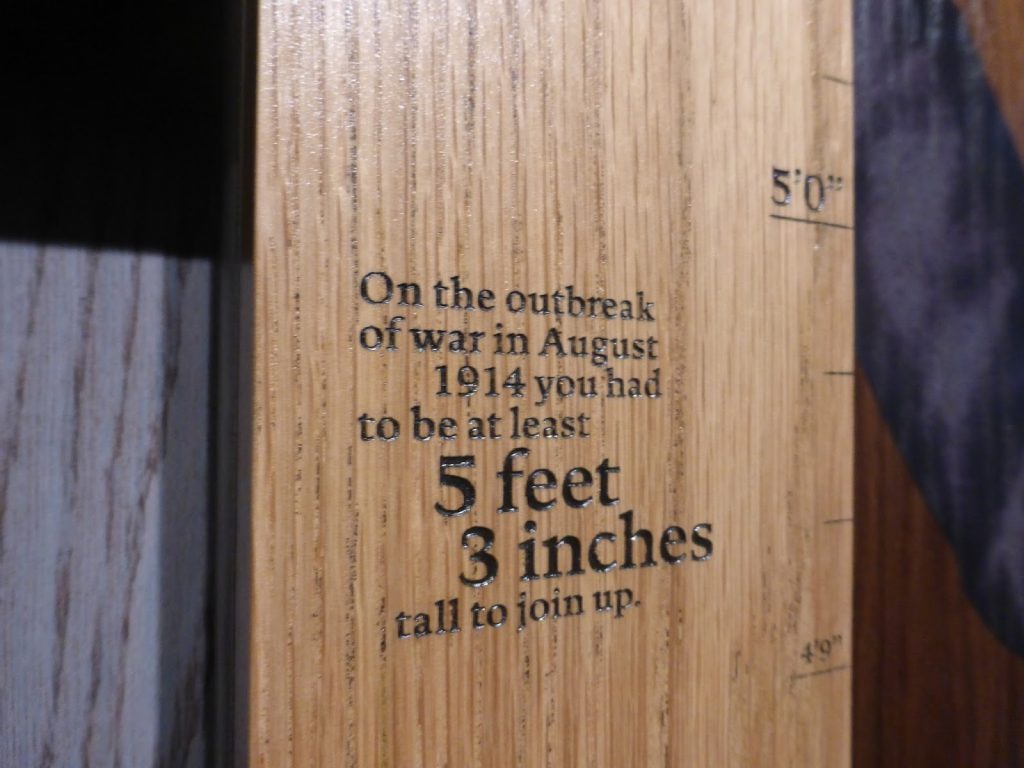

War fever lead to many being desperate to sign up and this letter from a boy of 9 wanting to be a bicycle messenger at the front was a poignant read.
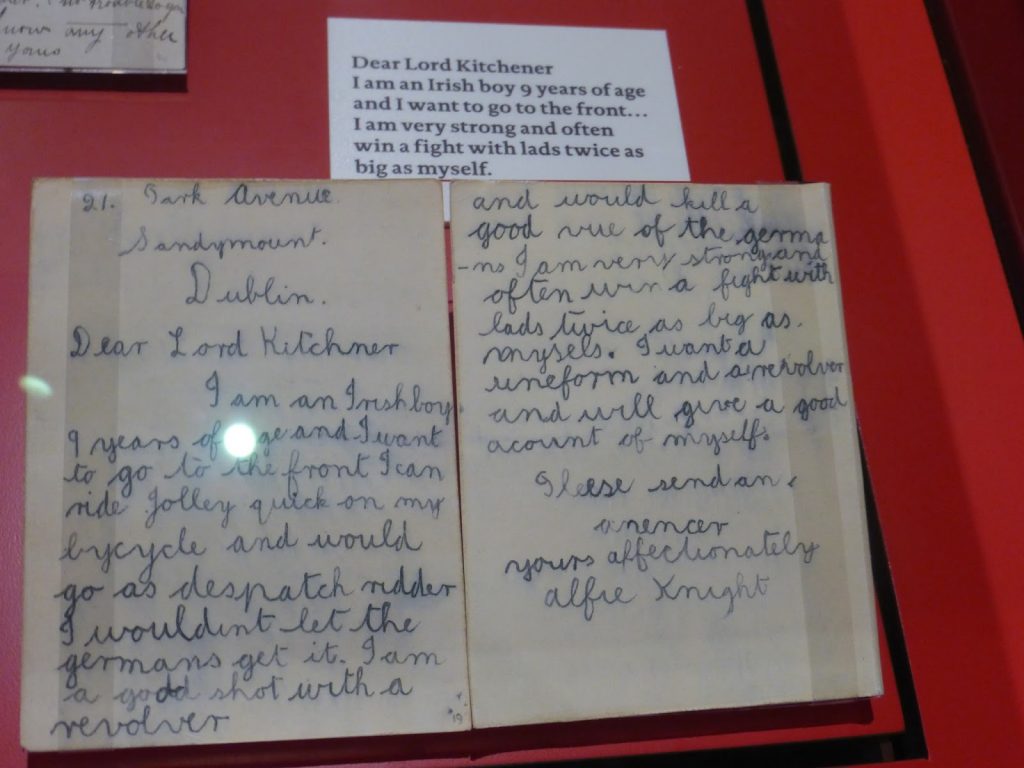
Posters rallied men to join up and worked on their guilt if they didn’t!
The photo on the bottom right above shows you one of the examples of interactive displays which feature all through these galleries and well-designed displays really add to the experience, the fun and the learning.
I was interested in the role of women during the war and photos of women taking the place of fighting men in factories as well their role as nurses, including the fateful role of Edith Cavell, a nurse who helped Allied soldiers escape and was executed by the Germans.
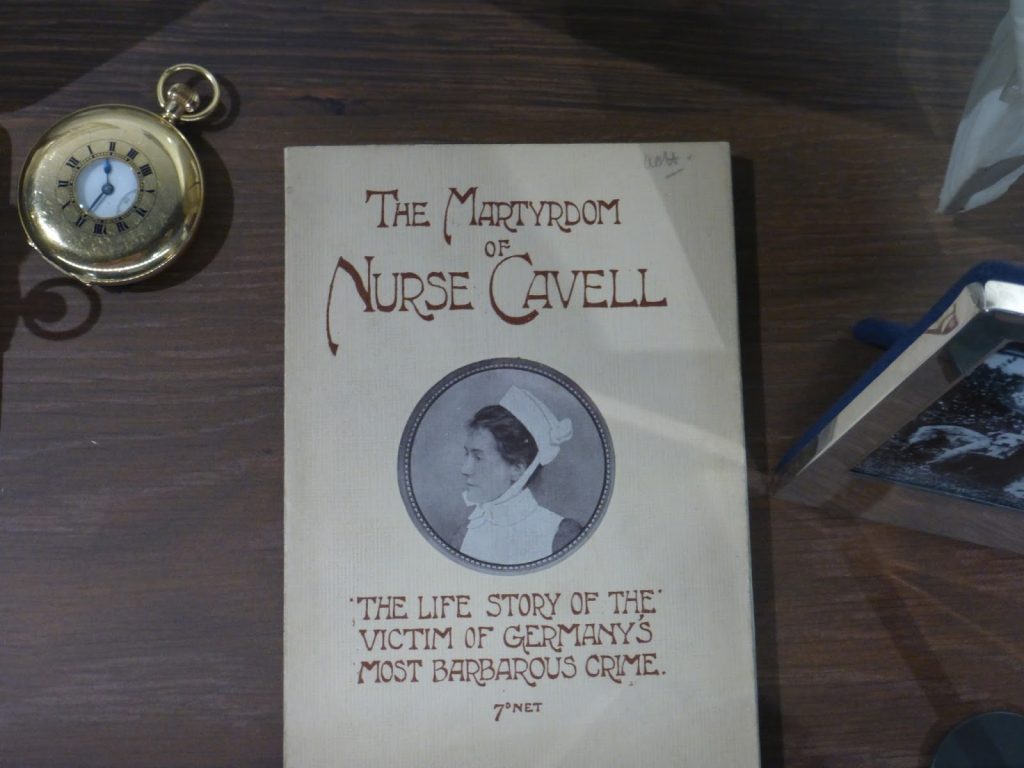
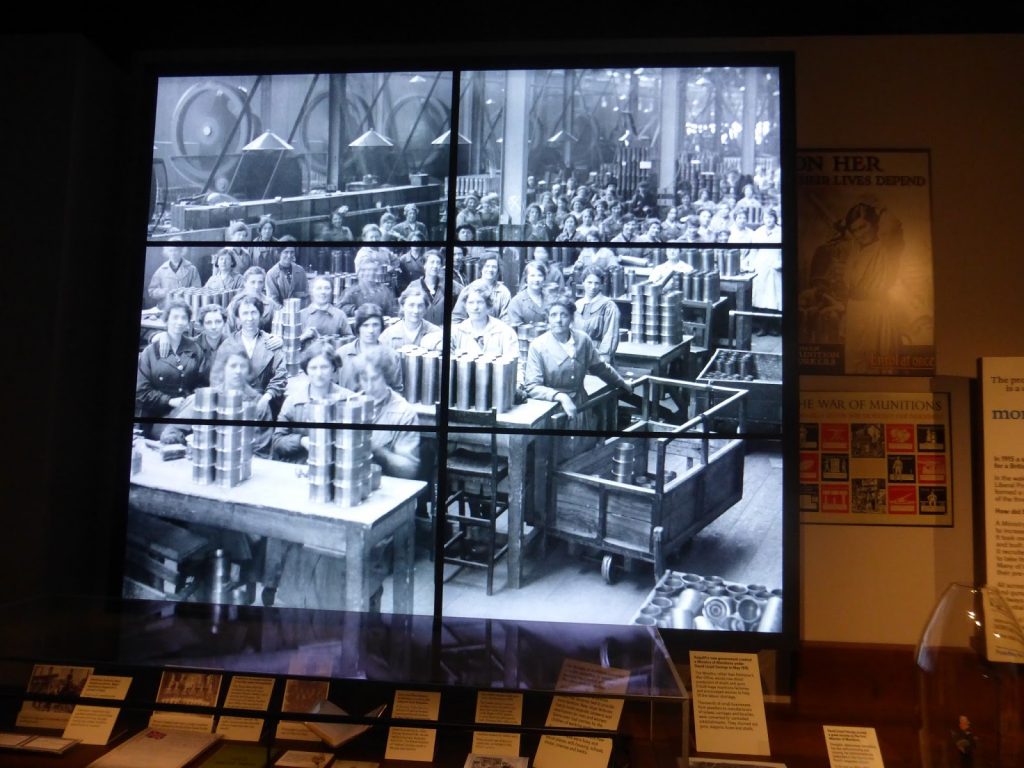
Smaller items often give insights that the appalling numbers of dead do not. Having said that, reading that 20,000 men could die in a day at the Battle of the Somme in 1916, over a million in total, is still hard to comprehend. These next 3 photos give some insight into the everyday struggle of existence for the soldiers, the fear and the mundanity.
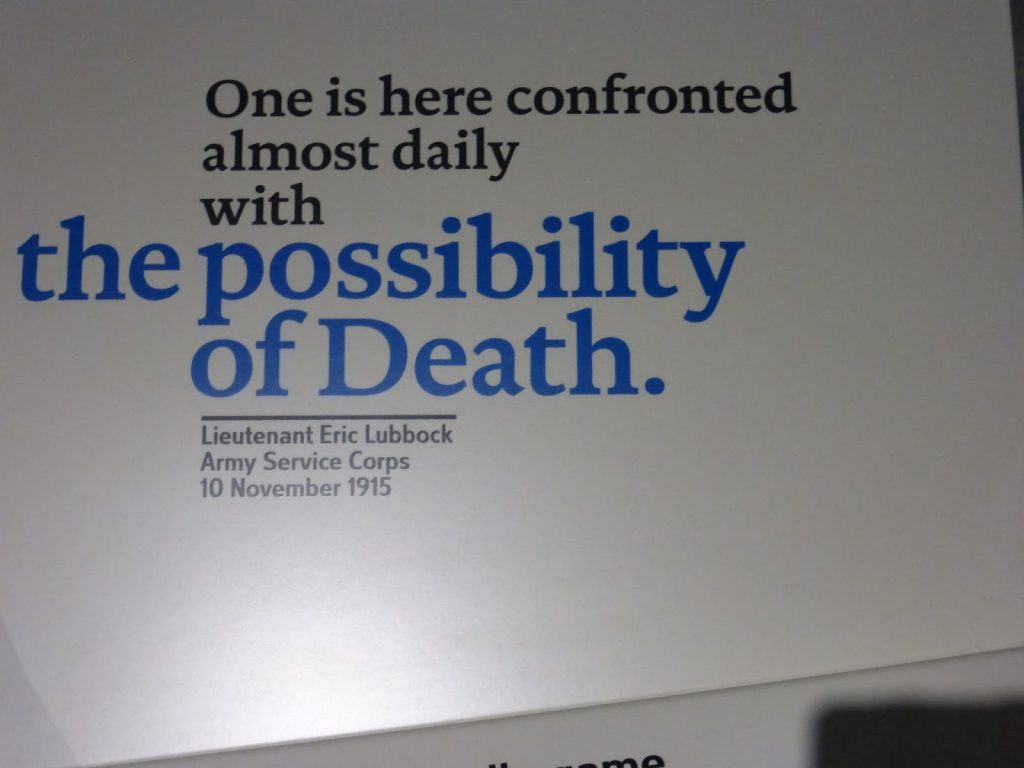
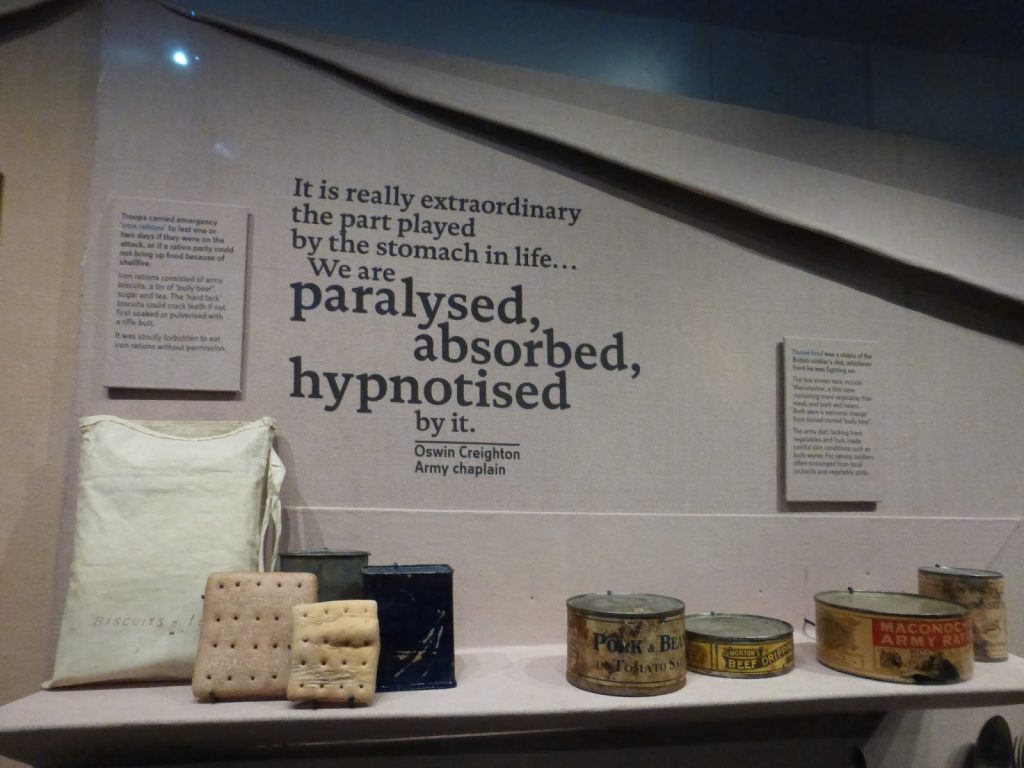
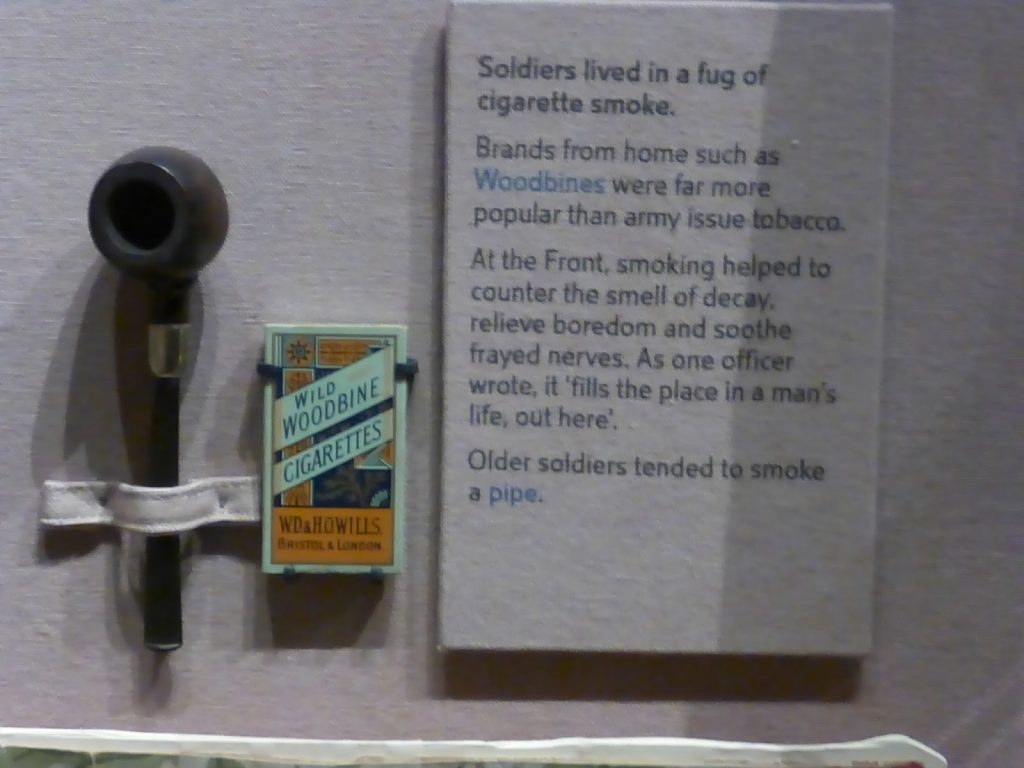
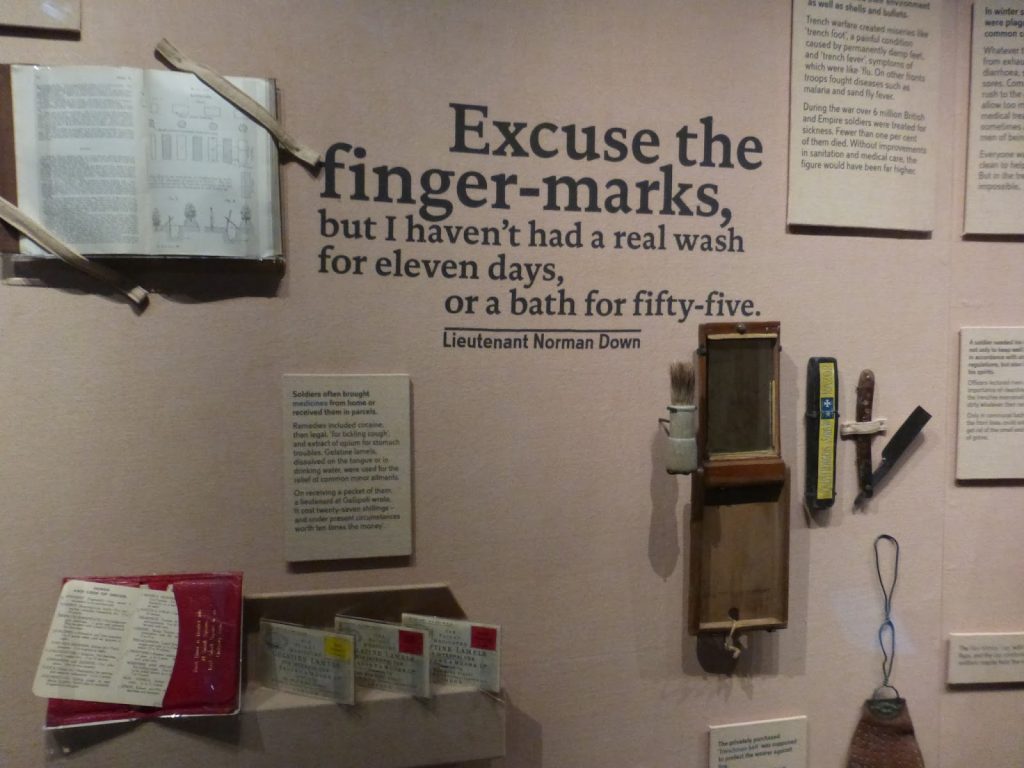
As you leave the 1WW galleries, you should take a moment to read and digest this quote from the last soldier to die who had experienced the 1WW and reflect on its impact:
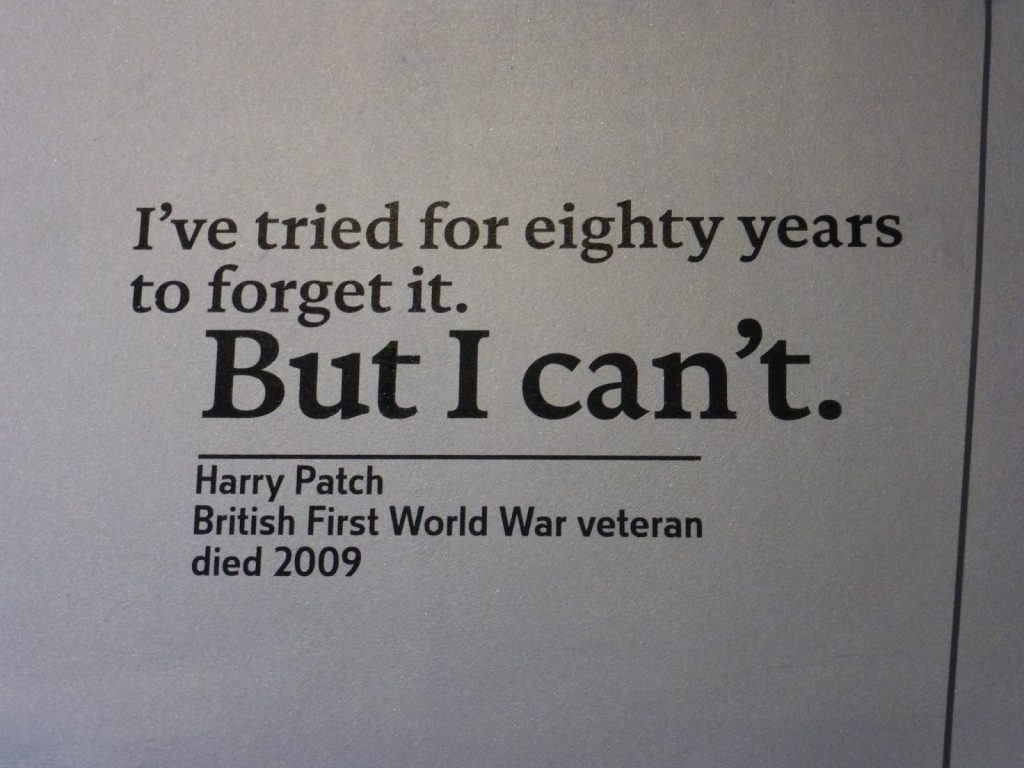
I was pleased to see that some areas had survived the museum revamp such as the 2WW feature on the Allpress family, tracing how the war affected their lives and what happened to them. On a more sombre note, the Holocaust rooms continue to tell their powerful and shocking story through information, interviews, models and personal possessions.
I was lucky enough to attend a press preview and reports since have described how busy the museum is, especially the 1WW galleries, so get there early and expect long waits to get in.
